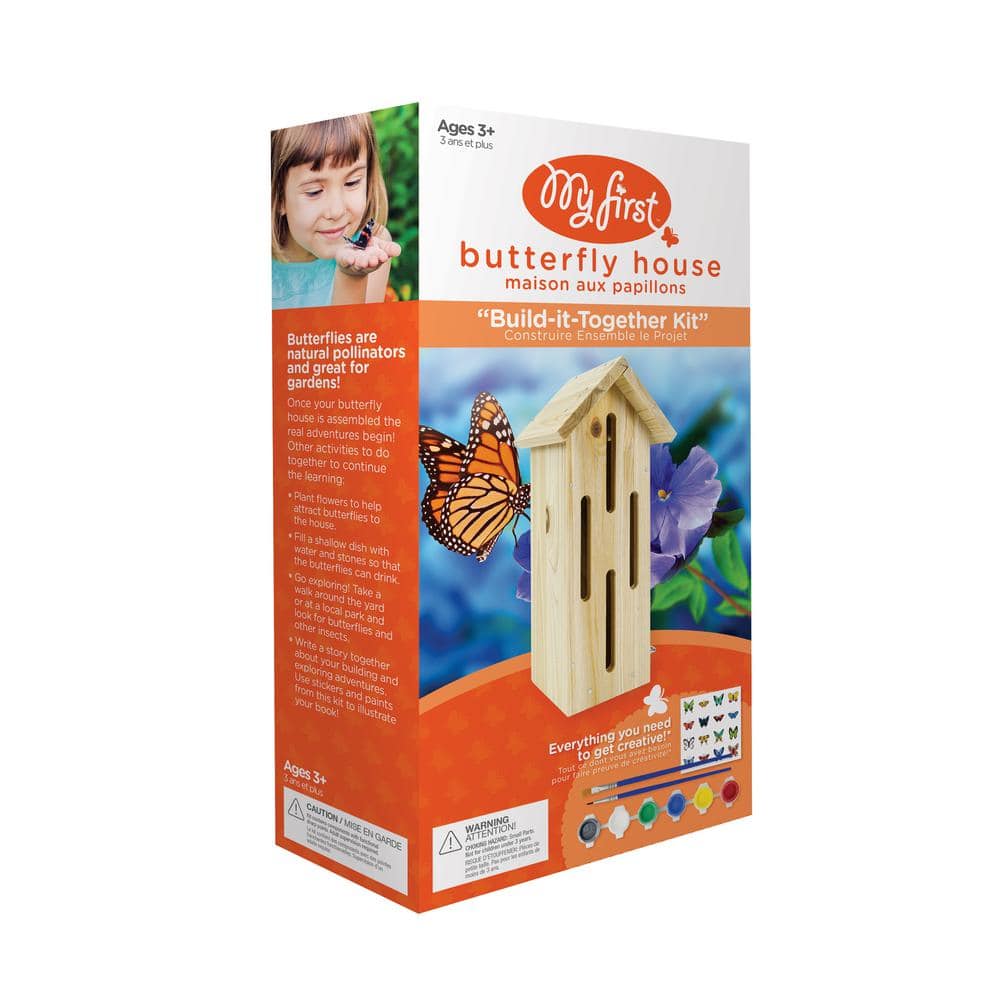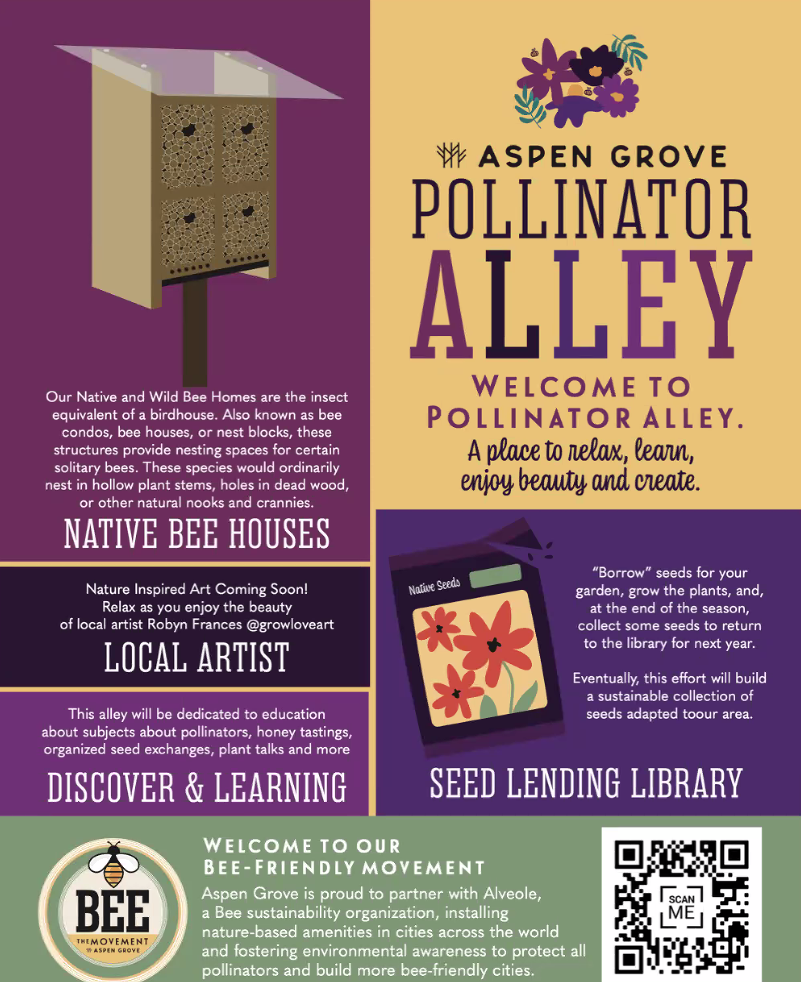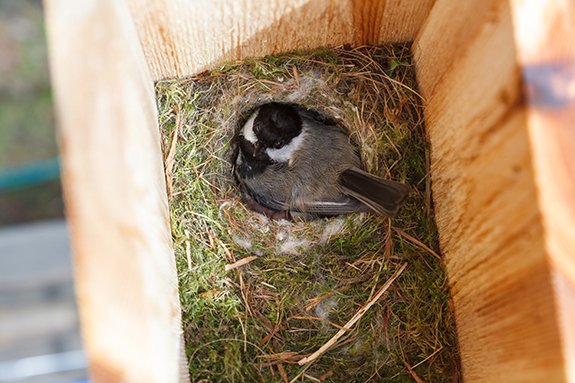Birdhouses do more than shelter birds; they can aid pollinators too. Crafting habitats for these creatures is both fun and beneficial.
Let’s delve into how building birdhouses supports essential pollinators in our environment. These tiny beings play a crucial role in the health of ecosystems worldwide. By creating birdhouses with pollinators in mind, you contribute to their survival and the flourishing of local flora.
This introduction will guide you through the importance of pollinators and how your birdhouse-building efforts can make a real difference. We will explore simple design tweaks that can transform a typical birdhouse into a welcoming haven for pollinators. Get ready to craft with purpose and help nature’s little helpers thrive right in your backyard.

Introduction To Birdhouses And Pollinators
Introduction to Birdhouses and Pollinators starts with understanding their roles. Both are vital for a thriving garden. Birdhouses provide safe spots for feathered friends. Pollinators like bees and butterflies help plants grow. Together, they keep nature in balance. Let’s dive into how birdhouses help ecosystems and the important job of pollinators.
Benefits Of Birdhouses For Ecosystems
Birdhouses offer safe havens for birds to nest. They protect from predators and harsh weather. Birds in turn control pests and help plants by spreading seeds. Healthy bird populations mean balanced ecosystems.
- Safe nesting spots for birds
- Pest control by birds
- Seed dispersion for plant growth
Role Of Pollinators In Nature
Pollinators move pollen, helping plants reproduce. Without them, many plants would not bear fruit or seeds. Gardens would be less colorful without their work. They support food sources for humans and wildlife.
- Move pollen between flowers
- Support plant reproduction and diversity
- Maintain food chains for all creatures
Designing Birdhouses For Pollinator Attraction
Creating birdhouses can be a joy. But did you know they can help pollinators too? With the right design, birdhouses become a haven for these vital creatures. Let’s explore how to make birdhouses pollinator-friendly.
Materials That Encourage Pollinator Visits
Natural materials are key. Pollinators are drawn to wood and bamboo. These materials make the birdhouses feel like part of their environment.
- Untreated wood: Safe for pollinators, avoids chemicals.
- Bamboo tubes: Perfect for solitary bees.
- Rough surfaces: Allows insects to cling easily.
Include plant fibers or dry grass for nest building. This encourages pollinators to stay.
Colors And Patterns That Attract Pollinators
Pollinators love bright colors. They spot them from far away. Use colors like yellow, purple, and blue.
| Color | Pollinator |
|---|---|
| Blue and Purple | Bees |
| Yellow | Butterflies |
| Red | Hummingbirds |
Add patterns like stripes or spots. They guide pollinators to the birdhouse entrance.
Ideal Locations For Pollinator-friendly Birdhouses
Choosing the right location for birdhouses is key. It helps birds and pollinators thrive. Let’s explore ideal spots for pollinator-friendly birdhouses.
Assessing Your Garden’s Ecosystem
Start by looking at your garden. What plants and flowers are there? Different birds and pollinators like different plants. Aim for a mix that attracts a variety. Use a simple table to plan.
| Plant Type | Birds Attracted | Pollinators Attracted |
|---|---|---|
| Sunflowers | Finches, Sparrows | Bees, Butterflies |
| Coneflowers | Warblers, Chickadees | Bees, Moths |
Native plants are best. They support local wildlife well.
Sunlight And Shelter: Balancing The Needs
Birdhouses need sun and shelter. Too much sun, eggs can overheat. Too little, it’s too cold. Aim for a spot with morning sun. It warms the house after a cold night.
- East-facing locations are ideal.
- Ensure there’s shelter. Trees or shrubs can protect from wind and predators.
- Keep birdhouses away from busy areas. It keeps birds safe and calm.
Remember, a good location means more birds and pollinators visit your garden. This helps plants grow and keeps the ecosystem healthy.
Incorporating Native Plants Around Birdhouses
Creating a bird-friendly habitat extends beyond just providing shelter. Surrounding birdhouses with native plants enriches the ecosystem for birds and pollinators alike. These plants offer food and nesting materials, while also attracting insects for birds to feed on.
Selecting Plants That Support Pollinators
Choose native plants to attract local pollinators. They have evolved with local wildlife and provide the right kind of sustenance. Pollinators like bees, butterflies, and hummingbirds play a crucial role in any garden’s health.
- Milkweed for monarch butterflies
- Purple coneflower attracts bees and birds
- Wild bergamot for a variety of pollinators
Ensure a mix of plant types: trees, shrubs, and flowers. This variety supports different pollinator species and their needs.
Timing Blooms With Bird Nesting Seasons
Sync plant blooms with bird nesting times. This timing provides birds with a steady food supply when they need it most.
| Bird Species | Nesting Period | Plant | Bloom Period |
|---|---|---|---|
| Robins | Spring | Serviceberry | Early Spring |
| Hummingbirds | Late Spring | Trumpet Vine | Summer |
| Goldfinches | Mid-Summer | Sunflowers | Late Summer |
Matching bloom times with nesting seasons boosts the survival rates of baby birds. It also keeps adult birds healthy during breeding.
Safe Birdhouse Features For Pollinators
Creating a haven for birds and pollinators starts with safe design. Ideal birdhouses shield delicate creatures from harm. They also offer a cozy space for pollinators. This guide focuses on building birdhouses that are safe for both birds and their buzzing friends.
Avoiding Hazardous Materials
Birdhouses should be free from toxic materials. Use natural woods and safe paints. Metals and plastics can release harmful chemicals. These may harm birds and pollinators. Stick to eco-friendly options to ensure their safety.
Accessibility For Birds And Pollinators
The right entry points are crucial. Birds need holes to fit snugly inside. Pollinators like bees need smaller access. Ensure entrances are smooth. This prevents injury. Add landing platforms for easy access.
- Use untreated wood
- Non-toxic paint is a must
- Avoid sharp edges

Maintenance Tips For Birdhouse And Pollinator Health
Maintenance Tips for Birdhouse and Pollinator Health are crucial. They help keep birds and pollinators safe. Let’s explore how to clean and fix birdhouses. We’ll also look at how to help pollinators throughout the year.
Cleaning And Repairing Birdhouses
Clean birdhouses once a year. Do this in late fall. Birds and insects have left by then. Use gloves for safety. Clean with water and a mild soap. Rinse well. Let it dry completely before closing it.
Check for damage. Look for cracks, holes, and loose parts. Fix these with wood glue or replace parts as needed. A safe birdhouse keeps predators out. It also protects from bad weather.
Seasonal Considerations For Pollinator Support
- Spring: Plant native flowers. They give nectar to pollinators. Clean water sources are also important. Add a shallow dish with stones and water for bees and butterflies.
- Summer: Keep birdhouses shaded. It protects the young birds. Continue to provide clean water. Grow summer-blooming plants for food.
- Fall: Prepare for winter. Add insulation to birdhouses. Use natural materials. Leave fallen leaves. They offer shelter for insects.
- Winter: Keep birdhouses closed. Check them for damage. Plan for next year. Choose plants that will bloom in different seasons.
Community Involvement And Education
Building birdhouses is more than a hobby. It’s a way to support local pollinators. Community involvement plays a vital role in this mission. Education leads to better understanding and action. Local workshops and events can spark interest and spread knowledge. Let’s explore how to make a real difference together.
Workshops And Building Events
Hands-on workshops teach how to make birdhouses. They are fun for all ages. You learn about pollinator-friendly designs. Schools, parks, and community centers host these events. They build skills and interest in conservation. Participants take home not just a birdhouse but also valuable knowledge.
- Choose safe, non-toxic materials
- Learn which designs attract native bees
- Understand where to place birdhouses for best results
Building events unite neighbors. They encourage teamwork. Everyone shares ideas and learns together. These events can even include contests. They inspire creativity and raise awareness.
Spreading Awareness About Pollinators
Education is key. We need to talk about the importance of pollinators. Bees, birds, and butterflies need our help. They face habitat loss and other threats. Community bulletin boards, social media, and local news can carry our message. Simple, clear facts work best.
- Explain the role of pollinators in our ecosystem
- Show how birdhouses protect and support them
- Offer tips for creating pollinator-friendly gardens
School programs also play a part. They can include lessons on pollinators. Kids learn early how to care for the environment. They can even help build birdhouses at school. This teaches them young how to make a positive impact.
Together, we can build a brighter future. We start with birdhouses. We grow with knowledge and action. Join a workshop or spread the word today!
Monitoring And Documenting Success
Building birdhouses for pollinators is a delightful venture. Keeping track of the visitors ensures success. Simple methods exist for monitoring. They also add to valuable data on local wildlife. Let’s explore how to document these wins effectively.
Tracking Bird And Pollinator Activity
Documenting which birds and pollinators visit is key. A simple notebook or a digital app can serve as a log. Note the species, time, and behavior. Take photos when possible. This data helps to understand habitat use. It also guides future birdhouse designs.
- Record date and time of sightings
- Identify species and note numbers
- Observe feeding and nesting habits
- Use photos for accurate records
Contributing To Citizen Science Projects
Sharing data with science projects is valuable. Websites like eBird and iNaturalist welcome public contributions. They use the information to track species health and migration patterns. Your observations support global research. They also connect you to a community of like-minded individuals.
- Find a citizen science project online
- Submit your birdhouse data regularly
- Connect with other bird enthusiasts
- Learn about local species and trends

Frequently Asked Questions
How To Attract Pollinators To Birdhouses?
To attract pollinators, use native flowering plants around birdhouses. Ensure they’re brightly colored and rich in nectar. Avoid pesticides, as these can harm pollinators. Providing water sources and nesting materials like twigs or leaves can also encourage their presence. Remember, diversity in plants attracts a variety of pollinators.
Can Birdhouses Support Pollinator Conservation?
Yes, birdhouses can support pollinator conservation. By creating a safe haven for birds, you indirectly benefit pollinators. Birds control pests that might harm pollinator populations. Additionally, incorporating plants that offer nectar and pollen around birdhouses can provide essential food sources for pollinators, aiding their survival and thriving.
What Are The Best Materials For Pollinator-friendly Birdhouses?
For pollinator-friendly birdhouses, choose natural, untreated woods like cedar or pine. Avoid toxic paints or chemicals that could harm pollinators. Ensure there are ample openings for ventilation and drainage. Incorporating rough surfaces inside can help fledglings exit. Surrounding the birdhouse with native plants enhances its appeal to both birds and pollinators.
When Is The Best Time To Set Up Birdhouses For Pollinators?
The best time to set up birdhouses for supporting pollinators is late winter or early spring. This timing allows birds to establish their new homes before the breeding season. It also coincides with the emergence of many pollinators, providing them with shelter and a food source from the surrounding flora.
Conclusion
Crafting birdhouses enriches our gardens and helps pollinators thrive. Think of these tiny structures as eco-friendly boosts for nature’s hard workers. With each birdhouse you build, you’re creating a haven for winged friends and pollinators alike. Embrace this simple, joyful activity.
Encourage biodiversity right in your backyard. Start today and watch your garden become a buzzing hub of life. Your efforts matter. Let’s build a brighter, greener future together—one birdhouse at a time.


